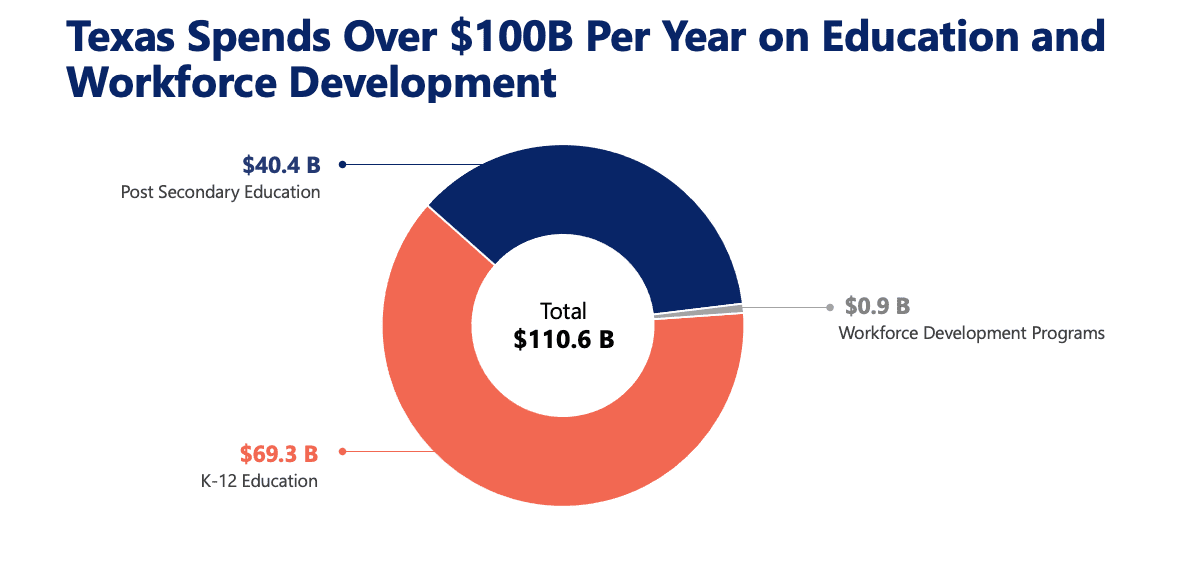The start of September often means celebrating Labor Day. While we recognize the contributions of American workers, here are five things to know about improving Texas’ workforce.
The workforce value of a high school diploma has significantly decreased in today’s economy.
In the last decade, the percentage of Texans with a high school diploma or below who held a high wage job — $65,000 or higher annually — fell from 51% to 11%. The importance of education and workforce training post high school is only continuing to grow.
The demand for skilled jobs in Texas actually increased during the pandemic.
Jobs in management, business and financial operations, and computer and mathematical fields, among others, saw notable growth between 2019 and 2021. These jobs tend to have higher wage opportunities for their workers compared to jobs in food preparation or retail sales, for example.

Compared to pre-pandemic numbers, the number of individuals who moved to Texas during the pandemic increased by 60%.
Individuals migrating to Texas are about twice as likely to have at least a bachelor’s degree than the existing Texas workforce. Heightened migration over the pandemic suggests that the growth in skilled, good-paying jobs may have benefited Texas migrants more than locals.
The state’s population is projected to grow by another 16 million Texans by 2050.
The state will continue to have access to future workers as nearly a third of Texans are currently 18 years old or younger. The main issue will be supplying them with the education and training they need for skilled jobs.
The state spends over $100 billion on education and workforce every year.
Sustaining the growth of skilled, good-paying jobs in Texas will require ensuring that our fellow Texans are empowered with the knowledge and skills needed to access those jobs. Focusing the state’s resources so that Texans can pursue the career they want for themselves and their families will help get us there..

